Taproom Artifacts: American Foreign Academic Research and their Contributions to our Taproom
To understand why Lost Worlds Brewing is an “archaeology inspired” brand, the display case in the back of the taproom is a good place to start. The contents tell the story of four project sites of American Foreign Academic Research (AFAR), an organization dedicated to the advancement of archaeological field research, cultural site preservation, and the belief that the science can be advanced through the education and outreach of professionals and students.
“I was introduced to AFAR through my children’s school, when my son was given the opportunity to participate in field research in Zorita, Spain four years ago,” said Lost Worlds Founder, Dave Hamme.” My family has been deeply involved in the organization ever since and has traveled to three of the four project sites so far.”
Mat and Dave clowning atop the Acropolis in 2019
The four sites include: Troia, Portugal; Mieza, Greece; Cahal Pech, Belize; Zorita de los Canes; Spain. Each shelf of the display is dedicated to a project site, and curated by AFAR Executive Director, Mat Saunders, who’s a friend and Cornelius resident. Since AFARs inception in 2006, Saunders has served as Executive Director, forging connections with archaeologists and building a program that takes 60-70 pre-collegiate students to these international sites each summer. When he’s not digging holes, he’s an anthropology and archaeology teacher at Davidson Day School.
Here’s more about the “artifacts” in the AFAR display case, in Mat Saunder’s own words:
This display case highlighting AFARs four project sites is located near the entrance to our Brewhouse, where the closed door is marked “Only Brewers and Archaeologists allowed beyond this point.”
“First, I put “artifacts” in quotes because they are truly artifacts of the project but not actual artifacts from any of our sites. Many of the items in the case are really great replicas of items we’ve discovered but we never remove any cultural material from the countries in which we have the privilege to work,” says Saunders.
Among the artifacts are replicas, photos, artwork, and field tools and notes from each project.
Troia, Portugal (top shelf): This summer would have marked our third season at Troia, a city that was the largest producer of garum (fermented fish sauce) in the Roman Empire. Garum was an original pub food and certainly would have been very popular here at Lost Worlds had they opened their doors a few hundred years ago.
Mieza, Greece (second shelf): This is the city where Aristotle taught the young Alexander the Great. This major Macedonian city literally played host to some of the most pivotal events in history and we’re so fortunate to be able to explore it.
Cahal Pech, Western Belize (third shelf): This is our flagship project that launched AFAR. We’ve been working at the ancient Maya city of since 2006, not missing a single summer until this year because of the pandemic. As a part of the Belize Valley Archaeological Reconnaissance Project, we’ve managed to piece together a long history of this cities occupation and we’ve also conserved a large portion of the site for future generations to visit and enjoy.
Zorita de los Canes in central Spain (bottom shelf): Several elements from our second project at the Medieval castle site of Zorita de los Canes in central Spain is on display here. This castle had many owners throughout its history but none more impressive as the Calatrava Order of the Knights Templar. AFAR has been the only research project to excavate at this marvelous site and the castle walls continue to unfold an exciting story. This shelf also holds my very favorite piece in the entire case. You will find a small painting of the castle’s cistern, which our team helped excavate and restore a few years ago. The painting is absolutely amazing and was done my student and long-time AFAR team member, Cameryn James.


